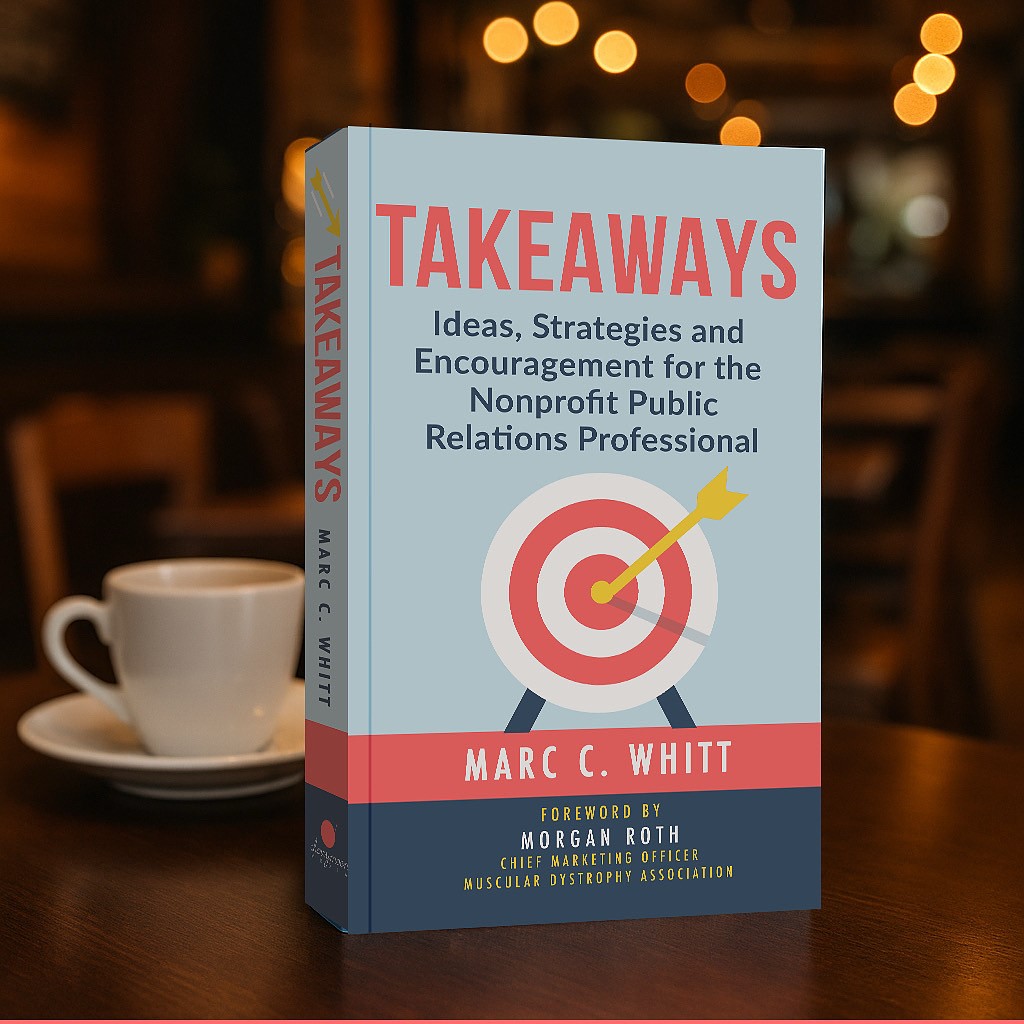Monday, December 01, 2025
Monday, December 01, 2025

(The following is an excerpt from “Takeaways” by noted PR leader Marc C. Whitt)
There’s a certain kind of person who makes everything feel manageable, even in the middle of a storm. In the world of nonprofit public relations, that person should be you.
Nonprofits operate in a climate that is mission-driven, fast-paced, and often under-resourced. There are high expectations, constant scrutiny, and urgent needs. And while that reality might make some people anxious, it’s also the space where problem solvers shine.
Let’s define this clearly: a problem solver is not necessarily the person who always has the answer. They’re the person who comes into the room ready to find the answer. They come prepared—with context, ideas, perspective, and the emotional steadiness to lead through uncertainty. They help others make sense of what’s going on. And when necessary, they ask the right questions to open the path to solutions.
No Time for Chicken Little
We all know the fable of Chicken Little, who believed the sky was falling and sparked a wave of needless panic. In nonprofit PR, there will be times when it feels like the sky is falling—when a major donor pulls out, a negative news story breaks, a staff misstep goes viral, or a program miscommunication sets off a wave of confusion. Your pulse quickens. Your inbox fills. Your leadership team turns to you with that look.
And that’s when you do not panic.
You take a deep breath. You listen carefully. You assess the landscape. You ask, “What do we know? What don’t we know yet? What’s our plan for getting answers?” You respond, not react. The goal isn’t just to resolve the issue—it’s to guide people through it.
When others see you remaining calm, they’re more likely to remain calm themselves. That’s not just a nice idea—it’s neuroscience. Emotions are contagious. Leaders who radiate composure help shape the emotional climate for everyone else. This is especially critical in nonprofits, where trust is the foundation, and every donor, volunteer, and community member is emotionally invested in your cause.
So yes—you may be internally sweating like Niagara Falls. But externally? You’re composed, collected, and credible. You are modeling what steadiness looks like. And believe me, people notice.
Know the Issue. Know the Landscape. Know Your People.
While you don’t need to be the ultimate expert on every detail, you do need to be informed. Being a valuable problem solver means showing up prepared.
If it’s a media inquiry, you’ve reviewed the background. If it’s a program issue, you’ve talked to the team. If it’s a social media firestorm, you’ve studied the tone and context before crafting your response.
When you walk into the room or pick up the phone, you do so with a solid understanding of what’s happening and why it matters. You’ve thought about how it affects not just operations, but people’s perceptions, emotions, and trust in your organization.
And you don’t approach it with a “Here’s the solution—take it or leave it” mentality. You’re there to contribute to a solution, not dictate one. Some of the best outcomes I’ve seen come from PR professionals who say, “Here’s what I’m thinking—what do you see?” That kind of humility opens the door to collaboration, which often leads to smarter, more sustainable solutions.
The Power of Perspective and Framing
A big part of being a problem solver is helping others see the issue clearly.
In nonprofit PR, that may mean reframing a challenge as an opportunity—or clarifying the bigger picture when others are too deep in the weeds. It might mean asking, “What are we really trying to solve here?” or “Who’s impacted the most, and how do we make things right?”
Sometimes the PR person is the only one in the room thinking about external audiences, public perception, or long-term trust. That’s your lane. Own it.
Your team is counting on you not just to patch the hole, but to ask if the ship is still on course.
You Are a Steward of Trust
Let’s bring it home: being a problem solver in nonprofit PR ultimately comes down to this—you are a steward of trust.
Every problem is a moment of truth. And people are watching closely to see how your organization responds.
Are you transparent? Do you take responsibility when needed? Are you clear about what happens next? Do you give people a reason to keep believing in your mission?
When handled well, even difficult moments can deepen trust. But when problems are handled with fear, defensiveness, or disorganization, they can chip away at credibility that took years to build.
You are not just a communicator. You are a counselor. A strategist. A calming presence. A catalyst for thoughtful, timely action. And those are the qualities that help nonprofits weather storms and come out stronger on the other side.
So, don’t shy away from the problems. Step toward them. With courage. With clarity. And always with the belief that solving problems is not just about fixing what’s broken—it’s about building what comes next.
Takeaways
1. Calm is contagious. Your demeanor in a crisis sets the tone for others. Be the emotional thermostat, not the thermometer.
2. Preparedness builds confidence. You don’t have to know everything, but you must be informed enough to contribute meaningfully.
3. Collaboration is key. The best solutions often come from dialogue—not dominance. Invite voices to the table.
4. Framing matters. How you define the problem can shape how your team approaches the solution.
5. Trust is earned in hard moments. Each problem is a chance to show your organization’s integrity, humility, and heart.
Written by: Editor
© 2025 Stratpair Ltd., trading as Strategic. Registered in Ireland: 747736